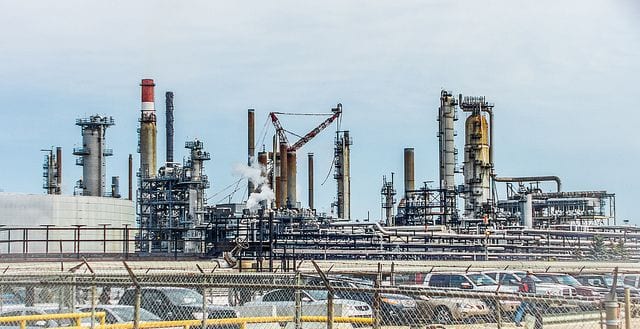In a surprise move two weeks ago, Shell, one of the world’s largest oil companies, voiced support for a shareholder resolution requiring better disclosure of climate change risks to its business. The move was followed soon after by a similar announcement from BP. The shareholder activists who submitted the resolutions, including the Church of England, UK Environment Agency, and UK and US local authorities, celebrated a victory for climate action. What exactly will these companies disclose?
While many factors influence a fossil fuel company’s climate risk, one of the most important is “potential emissions,” the amount of emissions locked up in a firm’s fossil fuel reserves. Companies’ fossil fuel reserves vary enormously in terms of their size, distribution, geological features and chemical composition. Yet they all share a common feature—their production and use will inevitably release carbon into the atmosphere. The potential emissions oil and gas companies’ fossil fuel reserves could make or break whether the world stays within its “carbon budget” and avoids the most dangerous impacts of climate change.
New WRI research that I am leading has the potential to shed some light on this important aspect of fossil fuel firms’ climate risk and offers guidance on how companies calculate their potential emissions. We have just released these draft recommendations for public comment. I believe that they will be of interest to the top management of the oil companies that have committed to disclose their climate risk, to the shareholder activists who put forward the resolutions, and to pension fund managers, mutual fund managers, and investors large and small who will be voting on the proposed resolutions.
Comments on the draft guidance are welcome and should be submitted by March 13. In considering them, it may be important to first understand the key concepts below.
What is the global carbon budget?
In order to avert the most dangerous impacts of climate change, the international community has agreed that average global temperature rise should be limited to 2 degrees Celsius (3.6° F) . Staying within this boundary requires limiting cumulative global GHG emissions to 1 trillion tonnes of carbon, or 3,667 gigatonnes of carbon dioxide (GtCO2), known as the “carbon budget.” We’ve already used up 52 percent of this budget since the Industrial Revolution, and if emissions continue unabated, the world is on track to exhaust the rest of it within three decades.
How important are fossil fuel reserves to the global carbon budget?
Fossil fuel use is by far the largest source of man-made emissions and the most important factor affecting whether we are able to stay within the carbon budget. In 2010, global fossil fuel use produced 32 GtCO2 , 72 percent of the world’s man-made emissions . Limiting warming to 2° C will require capping fossil fuel emissions at 990 GtCO2 for the period between 2012 and 2100. Annual fossil fuel use would need to be one-third that of levels in 2010.
What are potential GHG emissions?
Potential emissions are the carbon dioxide and methane emissions that are currently stored in fossil fuel reserves, but expected to be released once those reserves are produced. The main pathway by which stored carbon is released is via the combustion of fuel sold to end consumers.
However, not all produced fuels are sold. Much is used to support internal operations at production and processing sites, or is simply lost through leakage and flaring activities. This is particularly true of unconventional deposits, which are very energy intensive to extract and which comprise an increasing share of the world’s reserves. Calculating potential emissions will therefore require looking deep into production and processing operations, as well as at the combustion of sold products.
How important are companies’ potential emissions to the global carbon budget?
Governments hold the majority of the world’s fossil fuel reserves— 80 percent of oil and gas reserves and around two-thirds of coal reserves. Still, the reserves held by public companies are not insignificant—estimates indicate that the top 200 coal and petroleum companies (by reserve size) have enough stored carbon to use up 87 percent of the remaining carbon budget. Because these estimates focus only on the emissions from sold products and because companies are constantly finding new reserves, the potential emissions are likely much higher.
Do companies currently disclose their estimated potential emissions?
Currently, companies report only on historical activities. For instance, companies might voluntarily report the emissions from the combustion of fuel products they’ve sold in the past (as part of their Scope 3 inventories) or the emissions from flared gas. At present, no company reports any part of its potential emissions.
Why is WRI tackling this subject?
Fossil fuel companies’ potential emissions are simply too large to ignore. Through the Greenhouse Gas Protocol, WRI has helped establish globally recognized, industry standards for measuring and managing GHG emissions at the corporate level. These standards focus on historical emissions, and therefore omit the forward-looking perspective needed to capture potential emissions. The new WRI publication will provide this perspective, allow companies to make accurate and consistent estimates of potential emissions, and support the efforts of a wide range of stakeholders to spotlight and improve the emissions performance of the fossil fuel industry.
Source: WRI. Reproduced with permission.








